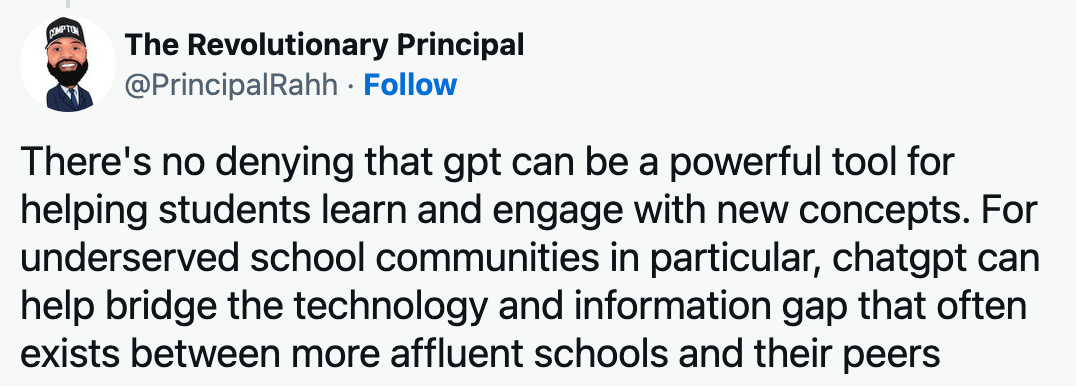- The EdTech Lab Newsletter
- Posts
- 🚀 Teachers, let's stop freaking out.
🚀 Teachers, let's stop freaking out.
ChatGPT and what it means for education.
Good morning ☀️ Welcome to The EdTech Lab Review, the newsletter that takes a look at the latest in technology and turns it into digestible content for educators and academics.
Today we're talking about ChatGPT.
ChatGPT exploded all over the internet when it was released by OpenAI on November 30, 2022. The website crossed 1 million users in only 5 days.
But earlier this month, New York City public schools banned access to ChatGPT.

Wait, but why?
If you haven't yet caught up - we got you. Here's the TL;DR.
ChatGPT is an artificial intelligence chatbot that is trained on information that is already readily available, in order to produce answers to questions that you feed it. (In the image below, we asked ChatGPT to explain ChatGPT to someone in 3rd grade.👇🏼)

Because of its sophisticated responses, people have already been using it in a number of ways. For example:
Writing full-blown essays on any particular topic
Crafting poems and song lyrics
Generating code for software development
Drafting full project management timelines
Making people laugh through jokes
With all these different use cases, teachers are getting worried about how students can use (and abuse) this in their learning. What happens to critical thinking? How do we screen for original work? Can this lead to a wide spread of misinformation?
It's easy to despair when some publications are going so far as to declare that ChatGPT has killed college essays all-together.
Hold up, no need to panic!
The reality is that as we continue to advance as humans, tools like ChatGPT will continue to keep popping up. The education ecosystem should not get left behind. And thankfully, a lot of educators still agree.
There are still many ways educators can use the tool to complement and enhance the learning experience.
Use it to generate creative prompts for student projects
Use it to spark conversation, dialogue, or debate
Use it to check student understanding
Use it as an assistant teacher
Use it with other edtech tools
... and the list goes on!
We're feeling pretty optimistic.
That's all, folks. Remember: let's make education smarter with technology.
Hi there. 💛 Don't forget to:
Follow us on TikTok. We're a lot of fun, promise.
Forward this email to a fellow educator and ask them to subscribe
Reply to this email and let us know how we can improve!

